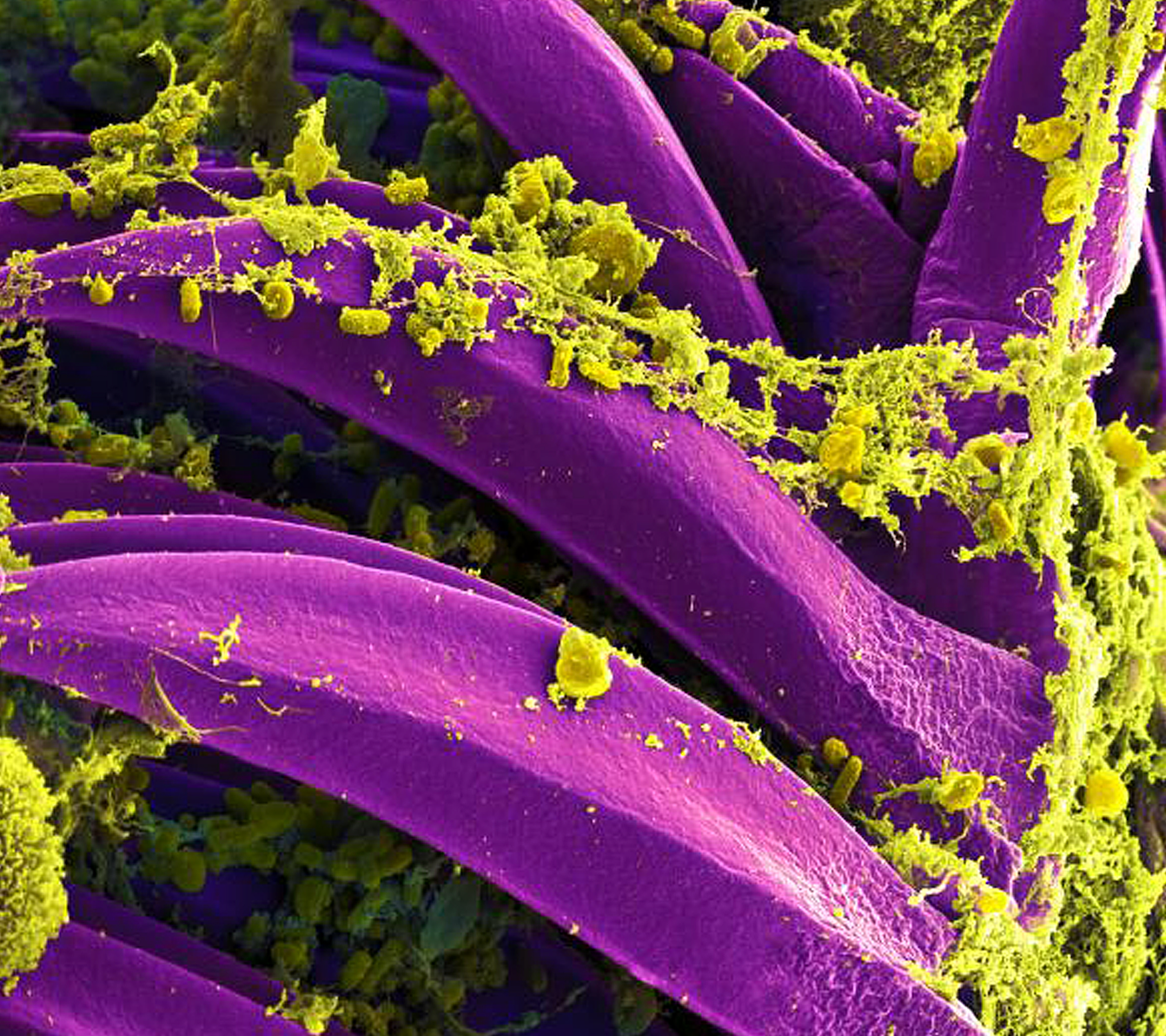New Mexico Man Succumbs to Bubonic Plague, Cause Not Reported
State health officials did not disclose the origin of transmission.
This digitally colorized scanning electron microscopic (SEM) image depicts a number of yellow-colored, Yersinia pestis bacteria, that had gathered on the proventricular spines of a Xenopsylla cheopis flea. These spines line the interior of the proventriculus, a part of the flea’s digestive system. The Y pestis bacterium is the pathogen that causes bubonic plague.
Image Credit: National Institute of Allergy and Infectious Diseases

The New Mexico Department of Health (NMDOH) announced last Friday that a state resident died from the bubonic plague. The man was from Lincoln County, which is in the lower central portion of the state, and was hospitalized prior to his death.1
“This tragic incident serves as a clear reminder of the threat posed by this ancient disease and emphasizes the need for heightened community awareness and proactive measures to prevent its spread,” State Public Health Veterinarian Erin Phipps, DVM, MPH, said in a statement. 1
The plague is a bacterial disease carried by rodents and is generally spread to humans through the bites of infected fleas. It can also spread by direct contact with infected animals, including rodents, wildlife, and pets.1 In addition, dogs and cats that are allowed to roam and hunt can bring infected fleas from dead rodents back into the home, putting household members at risk.1
In fact, a person contracted plague through cat-to-human transmission last month in Oregon. Health officials from that state announced that the resident and the cat received treatment but the animal did not survive the illness. The patient and close contacts received medication, with health officials stating no broader community risk.2
Disease Prevention, Diagnosis, Treatment
The NMDOH offered some preventative measures to avoid contracting bubonic plague including:
- Avoid sick or dead rodents and rabbits, and their nests and burrows
- Prevent pets from roaming and hunting
- Talk to a veterinarian about using an appropriate flea control product for pets as not all products are safe for cats, dogs or children.
- Have sick pets examined promptly by a veterinarian
- See a physician about any unexplained illness involving a sudden and severe fever
- Clean up areas near the home where rodents could live, such as woodpiles, brush piles, junk and abandoned vehicles
- Put hay, wood, and compost piles as far as possible from the home
- Don’t leave pet’s food and water where rodents and wildlife can get to it
In terms of signs, CDC reports that the most common symptom is the “rapid development of a swollen and painful lymph gland called a bubo. A known flea bite or the presence of a bubo may help a doctor to consider plague as a cause of the illness,” the federal agency reports.
People who live or traveled to the western US or any places where the plague is endemic and are experiencing symptoms of the plague should seek medical care immediately, CDC writes on its site. The plague is diagnosed with a test and can be treated with antibiotics.
For the New Mexico man, it has not been reported why he contracted the plague, but according to CDC, between 1970 and 2020, there has been more reported cases (253) in that state than any other in the US.1,3 The last human plague case in New Mexico was in a Torrance County resident in 2021. In 2020, there were 4 human plague cases: 1 in Santa Fe County, 2 in Torrance County and 1 fatal case in Rio Arriba County.
The New Mexico Department of Health is conducting outreach to Lincoln County area residents and an environmental assessment will be conducted in the community to look for ongoing risk with this latest case.1
References
1. Department of Health reports death of man from plague. NMDOH press release. March 8, 2024. Accessed March 12, 2024.
https://www.nmhealth.org/news/information/2024/3/?view=2071
2. Abene S. Rare Case of the Bubonic Plague Identified in Oregon. ContagionLive. February 14, 2024. Accessed March 12, 2024.
https://www.contagionlive.com/view/rare-case-of-the-bubonic-plague-identified-in-oregon
3. Plague. CDC. Last reviewed November 26, 2019. Accessed March 12, 2024.
https://www.cdc.gov/plague/diagnosis/index.html
